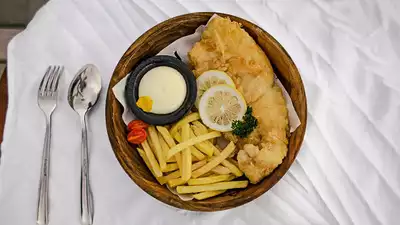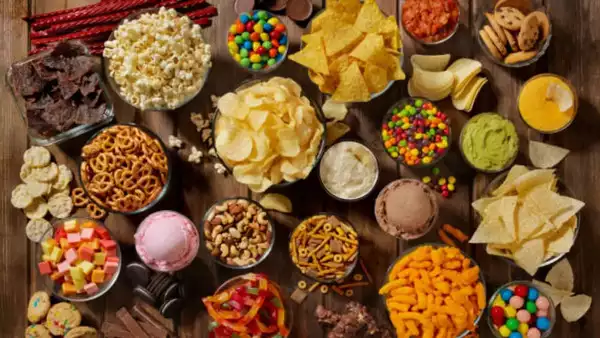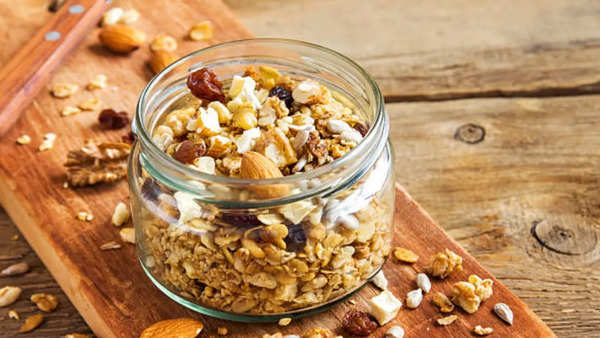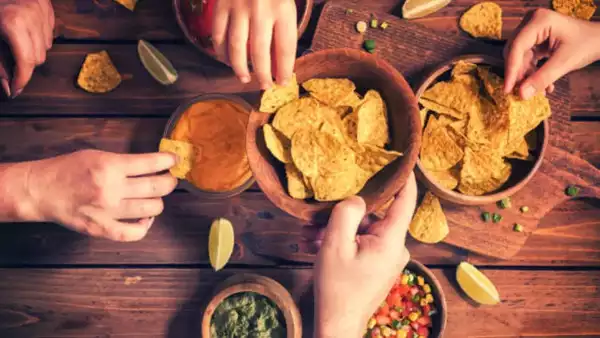When it comes to snacking, we all love munching on crispy and crunchy foods that sounds way too funnier and taste delicious. Be it holidays, a fun trip with friends or family and simply enjoying and chilling at home, the crunchy and crispy foods never fail to impress you. Most of the times, people fail …
Crispy vs Crunchy: Understanding the Key Differences and Cooking Techniques |


When it comes to snacking, we all love munching on crispy and crunchy foods that sounds way too funnier and taste delicious. Be it holidays, a fun trip with friends or family and simply enjoying and chilling at home, the crunchy and crispy foods never fail to impress you. Most of the times, people fail to differentiate between them. They may sound very similar, but they convey different qualities. Let’s explore the differences and get tips on how to prepare both textures at home.
Crispy foods: Light and delicate
Crispy foods are very thin, light, and break easily under pressure. Potato chips, tempura, or delicate pastry shells come into mind. The characteristic of crispy food is its fragility; it shatters with the slightest bite. Some of the best examples if crispy foods are chips, fried chicken skin, phyllo pastry, crispy cookies.
ALSO READ: This is why you always crave for crispy foods
Best Cooking Methods: Frying, baking, or air frying at high temperatures to remove moisture from the surface.

Crunchy foods: Thick and satisfying
Crunchy foods tend to be denser and requires a harder crunch of the bite. They typically sound very loud and satisfying during chews. Crunching involves layers or significant texture often. Some of the popular examples of crunchy foods: Carrots, granola, nuts and baguette .
Best Cooking Methods: Roasting, slow baking or drying. The internal structure has to be preserved while crunching the outside.
Crunchy vs Crispy: Key differences in preparation
Most of the crispy foods have very low surface moisture as compared to the low overall moisture in crunchy moisture. While crispy foods are cooked on short and high heat, crunchy foods are cooked on a longer yet even heat. When it comes to the texture of crispy vs crunchy foods, the latter has a thick and firm texture while crispy foods are thin and very light. Lastly, when it comes to the sound of consuming these foods, crispy foods have a sharp and quick sound. On the other hand, crunchy foods have a loud and prolonged sound.

Method for crispy food at home
Creating crispy foods involves obtaining a thin, dry surface layer that shatters easily. Here are some tips:
1. Use Proper Coating: For fried items, coat food with a mixture of flour, cornstarch, and seasonings for a thin, crispy layer.
2. High Heat Cooking: Fry, bake, or air fry at temperatures of 375°F (190°C) or higher to evaporate moisture quickly.
3. Oil Temperature: Deep fry food at 350°F or 180°C. Oil too cold makes food soak up a lot of oil, whereas if it’s too hot, it will burn up before it has a chance to crisp up.
4. Dry Ingredients: Absorb excess moisture with paper towels. Moist surfaces turn soggy.
5. Thin Slices: Such as chips or crackers achieve crunchiness through thin slicing prior to frying or baking.

How to make crunchy foods at home
Crunchiness needs both structure and a firm texture. Here’s how to achieve it:
1. Use Dense Ingredients: Choose sturdy ingredients like nuts, seeds, or vegetables to create naturally crunchy textures.
2. Slow Baking or Roasting: Roast items like nuts, chickpeas, or granola at a low temperature (around 300°F or 150°C) for an even, crunchy result.
3. Stacking: For bread products, such as baguettes, stack layers that contain enough moisture and kneading for a crispy crust.
4. Do Not Overcook: Maintain moisture on the inside to ensure a soft texture while the outer layer becomes hard.
5. Dehydration: Remove water from foods such as fruit chips or veggie crisps by using a dehydrator or oven. Balancing crispy and crunchy textures
How to make crispy French Fries at home
Sometimes you would wish to mix crispy and crunching components, like when making fried chicken with crispy exterior and crunchy juicy inner parts. For such products:
- Double-coating: dip the component in batter and crumbs to have a layered effect.
- Temperature regulation: Fry at high heat for the initial part in getting crispiness then adjust it down for complete cooking.
- Layered Flavors: Use marinades or seasonings to complement both textures.
Crispy and crunchy foods each bring unique pleasures to the table, with their defining textures enhancing the overall eating experience. While crispy foods offer light, airy bites, crunchy foods provide satisfying, hearty textures. With the tips provided, you can experiment and create both textures at home, elevating your cooking and delighting your taste buds.
(Images courtesy: iStock)



